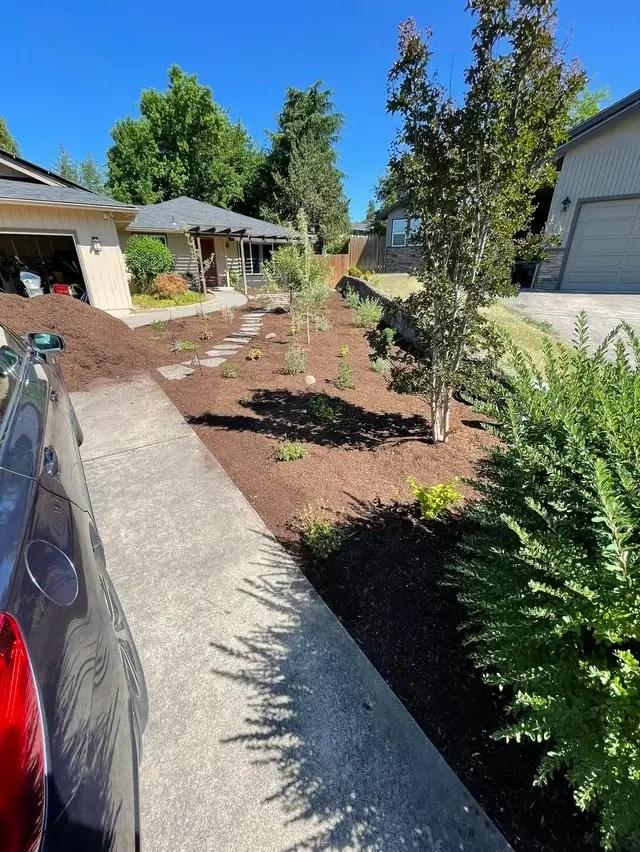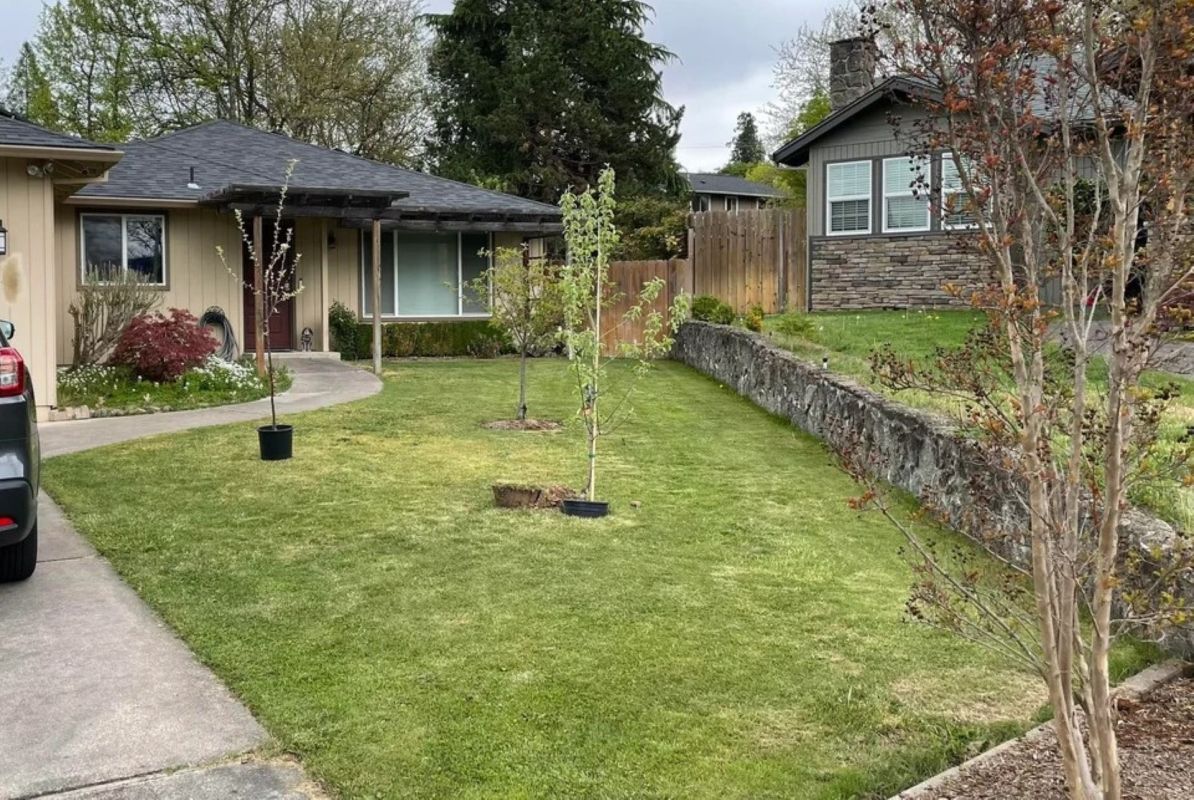A Redditor had people green with envy over their no-grass yard transformation in a recent post in the r/NoLawns subreddit, which is "devoted to alternatives to monoculture lawns, with an emphasis on native plants and conservation."
The poster proudly shared before-and-after pictures of their yard's two-month transformation under the headline "Ripped the lawn out in May." The first photo is of a grassy lawn, and the second is of their now grassless yard decorated with native plants.

Under the photos of their yard, the Redditor wrote, "How it looked in May when I started compared to today."
In an effort to reduce their contribution to the rapid overheating of our planet, many people have opted to follow expert advice and rewild their yards by replacing grass lawns with native plant gardens like the one in this post.
Grass lawns are considered monocultures — pieces of land that grow just one type of vegetation — and the Tennessean reports that they are death sentences for pollinators, who are responsible for the survival of around 75% of the world's flowering plants and 35% of the world's food crops, according to the National Institute of Food and Agriculture.
The Columbia Climate School further reports that lawns take up an alarming 30 million to 40 million acres of land in the U.S., lawn mowers account for about 5% of the nation's air pollution, and more than 17 million gallons of fuel are spilled refilling lawn and garden equipment annually.
And it doesn't stop there; data from the Environmental Protection Agency shows that 9 billion gallons of water go toward landscaping irrigation in the U.S. daily, and runoff filled with the pesticides and fertilizers used to maintain grass lawns ends up in our drinking water, wetlands, and oceans.
Native plants, on the other hand, are adapted to their environment so they require far less water, zero pesticides, and attract pollinators and other native wildlife, which are essential to healthy ecosystems.
All added up, native plant landscapes save homeowners time and money while also helping the environment, and the post's comment section was filled with praise for the change.
"Looks fantastic!" commented one user.
Another went further, saying, "Beautiful, it makes it looks like a walking path in the trails or forest and you are saving in watering the yard. I wish I could do this."
Join our free newsletter for easy tips to save more, waste less, and help yourself while helping the planet.









